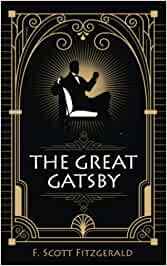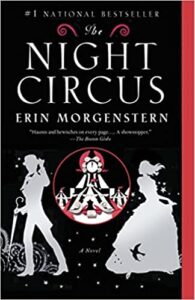Are you looking for ways to make your story more believable? What about adding detail? What is the setting in a story, and how can it create an immersive environment for the reader? These are all questions that we will answer in this blog post. We will also talk about time, place, and environmental elements included in any good story setting. In addition, there are some examples of books that are famous for their vivid imagery.
1. Introduce the protagonist and antagonist
While the plot is essential in any thriller, the character development can be just as crucial. After all, the characters drive the story.
How does the protagonist look? What are their personality traits? What do they wear that helps you visualize them in your mind’s eye as you read through the story set?
What about the antagonist? Do they wear similar clothes to the protagonist but with a different color scheme? What are their personality traits? What is their relationship to the protagonist, if any?
For readers to get lost in your story, you need to introduce the protagonist and antagonist right away. Then, give just enough information so that readers can start visualizing these characters as they read about them.
Here is an example:
– Susan is a tall, striking woman in her early thirties. She’s well-liked as a fitness trainer in Vancouver and wears leggings, fitted T-shirts, and workout shoes daily. She practices martial arts and likes to joke with her friends. Susan is assertive but can also be sensitive.
Susan’s husband, Tom, is a police detective who brings out the softer side in Susan. While he wears a suit or jacket to work, he changes to jeans, T-shirts, and sneakers when he gets home.
The two of them are on holiday on Vancouver Island when Tom takes a call from his boss. They need him to come back to the city to participate in an insurance fraud investigation. A well-known top businessman is suspected of fraud as he attempts to collect the insurance money soon after his office building burns.
2. Describe the setting – time, place, weather, etc.
In what period does your story occur, and what are some of the defining elements of that period? What is different now than then (technology, social mores)? How do these changes affect your characters?
Are you writing a contemporary story in the here and now, or are you writing a historical fiction novel?
What geographical location is it? What year is it, what day or date? What season is it? What cultural surroundings? (You could use Google street view for details.) All these details help set the tone and mood for your story. For example, what kind of weather is it? Is the climate hot or cold, wet or dry, windy or calm?
If you are writing about a fantasy world, what type of landscape does your story take place in (forest versus desert versus tundra)? What kind of terrain do they have to cross?
The setting of your story can also help to set the tone and mood. For example, a cozy cafe might be perfect for a light-hearted romantic comedy, while a dark alleyway could add suspense and tension to a murder.
A setting could be something like this:
– Vancouver Island is at its best in the middle of August. It seems too glorious to just up and leave. Susan and Tom love the fresh smell of nature, the sea breeze, and the soft rustle of trees in a gentle breeze. It’s a disappointment, but it’s the nature of Tom’s job.
They pack their car and head south for an early ferry from Nanaimo the following morning. They cross Georgia Strait, watching snow-capped mountains in the distance and sailboats gathering for a regatta in a bay, wishing they didn’t have to leave.
After landing in Horseshoe Bay two hours later, they get back in their car and start down the highway toward downtown Vancouver. Tom goes to interview the businessman, and Susan goes to the gym.
Then Tom doesn’t return from the interview. Susan tries to reach him by phone a few times and finally calls his co-worker, Jim, at the police department. She is distraught. Tom is the world for her. She knows he would have called her if something was wrong and fears his disappearance might be foul play.

3. Provide a summary of what has happened in your story so far
Has something happened to your protagonist that changes their perspective on the world? What about changing their life forever (death of a loved one, loss of job)?
What is your protagonist’s personality like, and how might this significant event in their life change it? How has your protagonist reacted up to this point? What do they feel strongly about, and what motivates them to take action? What are they unsure about, and what do they need to figure out before the story ends?
What is going on outside of your protagonist’s life impacts their journey through the story (war, famine, natural disaster)? What about the internal struggles of your protagonist’s friends and family members?
Here is a summary example:
– Susan is an intelligent, capable woman who is fiercely protective of her husband, Tom. He is the most important person in her life, and she intends to keep it that way. She had high hopes to get a week alone with Tom at the resort, but after two days they are back in the city.
After interviewing a well-known top businessman suspected of insurance fraud, Tom doesn’t return. So when Susan can’t get hold of him, she contacts Tom’s co-worker, Jim, telling him she will do whatever it takes to find Tom. Can he help?
Jim knows Susan. With her, this means full charge ahead, no hesitation. She wants to find Tom’s car and he’s on his way. When they finally find the car in a park near the businessman’s home, they call for police reinforcement.
The police question the businessman. Staff in the house swear he has not met with anyone or left his home for two days. There are no visible cameras installed on the property. The police search the car but don’t come up with any leads.
4. Write an overview of the conflict and its consequences for both main characters
What obstacles must your protagonist overcome to achieve their goal, and what will they have to sacrifice along the way? What is the conflict between the antagonist and the main character? How might this conflict escalate through both sides’ actions throughout the story? What’s at stake?
Here is an overview example
– Susan can’t possibly accept that she might have lost the most important person in her life. So after telling everyone that she will stay with a friend on her boat for a couple of days to rest, she disguises herself, borrows a small truck from her aunt, and drives around until she catches sight of the businessman.
Following him to a construction site where he meets up with another man, Susan moves close enough to hear the businessman saying, “Can we trust Parker?” Susan doesn’t know anyone with the name Parker, but she recognizes the other man.
Alerted by the businessman’s aggressive tone and how he pokes the other man’s chest, Susan decides she must take a closer look at the businessman.

5. Describe a pivotal scene in your story that changes everything for your protagonist
The protagonist’s relationships, romantic and family, (build on this). What is the protagonist’s role in these relationships? What does she want from them? What do they want from her?
The setting of your story can also add to the tension and conflict. If you’re writing a thriller, for example, consider creating a tense atmosphere by describing an abandoned building and an event that forces the protagonist to take action and confront the conflict head-on finally.
Example of a pivotal scene:
– Susan calls Jim again and describes the man talking to the businessman. Jim tells her he knows who he is and how to get in touch with him.
Susan meets with this contact and learns the truth about Tom’s disappearance and where she might find him if he’s still alive.
In addition, the contact tells her he can prove that the businessman killed his best friend after hiring him to burn down the building – that he has the whole scenario on video. But he is scared – someone is threatening him.
Susan and her contact confront the businessman together out in the open near the place where Tom is supposed to be held.
While Susan is standing by with the tape, her contact confronts the businessman in a voice loud enough for people to stop and react to the most intimate details in the killing tape.
Susan moves forward, holds up the tape, and loudly announces she has it all on tape and to call the police.
The businessman runs into the building. People who have overheard the confrontation outside affront him. Something goes wrong, and the businessman dies.
6. Discuss how this conflict has changed or influenced your protagonist’s life so far
Has it changed your character’s life? What have they learned from this real-life experience? What would they change if faced with the same conflict again?
The conflict should have a lasting impact on your protagonist, and it should be clear why this particular conflict is so important to them. The more personal the competition is to your protagonist, the more exciting and engaging your story will be. Friction creates tension, drama, and emotion, making for a compelling read.
Depending on how well the protagonist did during their confrontation, they will either die or succeed in defeating their antagonist. Here, everything comes together and changes for your protagonist in a big way, either by success or failure.

An example of how the conflict changed the protagonist:
– Susan runs into the building and finds Tom. Overjoyed, she pulls him close, wows to treasure their love forever, and never take him for granted ever again.
Different sample stories that might give you ideas:
– The protagonist is a girl named Alice. She can see into other people’s memories and watch their pasts play out in her mind. The antagonist is an evil witch that lives deep within the woods, far away from civilization. Alice sits by herself on top of a hill, looking at all she can see below her, contemplating life while watching bees fly around lazily about flowers.
The sun is shining high above her, but it will soon be dark. She had better get home before nightfall approached quickly with its long black claws stretching for any poor soul unfortunate enough to be outside still when shadows creep across the land like hungry wolves stalking prey.
Suddenly, there is a movement among some bushes just ahead of where she sits, and Alice’s heart quickened as her breath caught in her throat. What if it was a wolf? What would she do?!
– Shawn is a shy, introverted high school student. He struggles to make friends and prefers reading books alone in his room. His only friend is his cat, Ginger.
One day he meets an outgoing girl named Beth, who likes cats too! They start talking and become best friends quickly. But then, one night, she tells him that they can’t be friends anymore because of something her dad said about Shawn’s family (he has two moms). This news devastates Shawn even more than when he found out that the boy he liked at school doesn’t like him back.
Famous authors painting vivid pictures with their words:
Here are some examples of books that are famous for their vivid imagery.
The Great Gatsby by F. Scott Fitzgerald
White Oleander by Janet Fitch
The Night Circus by Erin Morgenstern
One Hundred Years of Solitude by Gabriel Garcia Márquez
The Count of Monte Cristo by Alexandre Dumas
Conclusion
You must know your protagonist and antagonist when you’re ready to create a story setting. In addition, the time of year is significant in terms of what kind of conflict or plot will make sense for your main character.
I hope the tips in this blog have been helpful! If you’re working on your first novel and are looking for more help with your writing, please check out my other articles at https://ullahakanson.com/blog/
Best of luck with your writing!
Ulla






